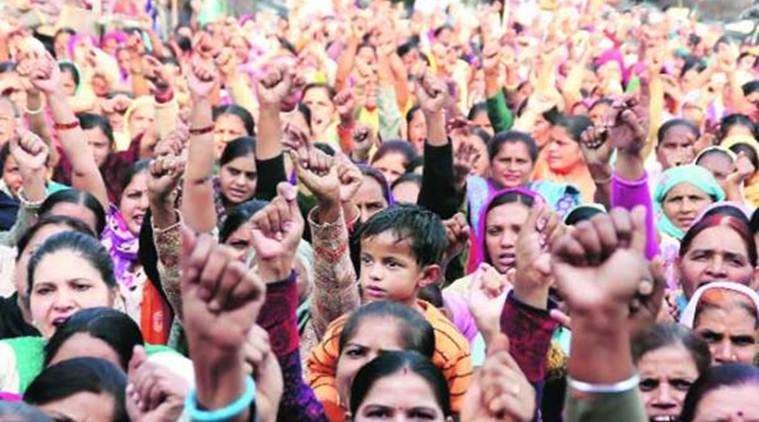Those we take for granted
Anganwadi workers, teachers, nurses are paid low salaries, their work devalued

Frontline workers providing basic services through various government programmes form the backbone of the country’s social welfare system. India’s ability to achieve its SDGs or to have a healthy skilled workforce that contributes towards economic progress or social and human development depends to a large extent on the performance of teachers, nurses, anganwadi workers, panchayat secretaries and PWD staff. That is perhaps why they have been at the receiving end of the criticism for shortfalls in the country’s social indicators. Unfortunately, while the blame is easily apportioned, there is not enough attention paid to the conditions under which they work or the value that is attributed to their work.
These workers face a number of obstacles in doing their daily jobs — lack of infrastructure, poor training, interminable bureaucratic reporting responsibilities, no supportive supervision, absence of clear accountability structures (to the community they serve as well as to the higher-ups), poor grievance redress mechanisms and for a majority, less than commensurate remuneration. These concerns are usually covered up in the narrative of rampant absenteeism and poor attention to core responsibilities. It is based on the assumption that all government employees are paid according to the Pay Commission scales. Nothing could be further from the truth, at least as far as the frontline government employees are concerned.
Let us take the example of anganwadi workers. There are almost 14-lakh anganwadi workers in the country providing health and nutrition services to over eight crore beneficiaries. They provide a long list of services, ranging from teaching pre-schoolers to visiting homes of young children for nutrition and health counselling. Despite the importance of the work, their positions are considered “honorary” and their emoluments kept out of all norms of minimum wages and pay grades. In most parts of the country, anganwadi workers get about Rs 5,000 a month, which is less than the minimum wages and even these small salaries are often irregular and delayed. A study of six states by the Centre for Equity Studies in 2016 revealed that 35 per cent of the workers had not received their previous month’s salary, 50 per cent of the workers felt that the funds they received for running the day-to-day activities of the centre were inadequate and 40 per cent reported spending their own money to keep the centre’s activities going.
Another example is that of government school teachers. With salaries presumed at Rs 40-50,000 a month and upwards, their lack of commitment to teaching is seen as unpardonable. While there is truth in the fact that teachers devote less than desired time to teaching, what is less understood are the reasons for this. The reality is that low financial allocations to the education sector have meant that state governments cannot afford to hire teachers at the Pay Commission scales. Therefore, over the years, they have hired fewer teachers, leading to huge vacancies, or resorted to various forms of contractualisation that allows them to circumvent the norms. As a result, salaries, in fact, range from Rs 3,700 per month to Rs 50,000 per month, for the same post and quantum of work in the same school. A case filed by teachers in Gujarat, showed that some of them were being paid less than even the minimum wages. Despite the Gujarat High Court ordering a revision of their pay scales, the matter had to come to the Supreme Court, where it has been awaiting a judgment for four years.
In a recent visit to a Nutrition Rehabilitation Centre (NRC) in Madhya Pradesh, a staff nurse appointed on a full-time basis (also doing night shifts) was found to have a salary of just Rs 10,000 a month — information that is not available in the public domain. Similarly, RTIs filed by one of the authors, on the salary structures of teachers across all states, has come a cropper. It appears that this basic information is not collected in any systematic manner by any of the states, or by any national data collection agency.
After the RTE banned contract teachers, non-regular teachers were no longer referred to as contract or para teachers, but in fact continue to function as such. Their contracts are “permanent”, but their terms are not that of a regular government employee. And, like the anganwadi, school teachers are saddled with a host of administrative work. The spectre of shortages, non-teaching duties and low pay indicate a rapid de-professionalisation of teaching and de-valuing of their core responsibilities.
If the crisis of performance in these sectors is to be addressed a closer look at their governance architectures is necessary.








































No hay comentarios:
Publicar un comentario